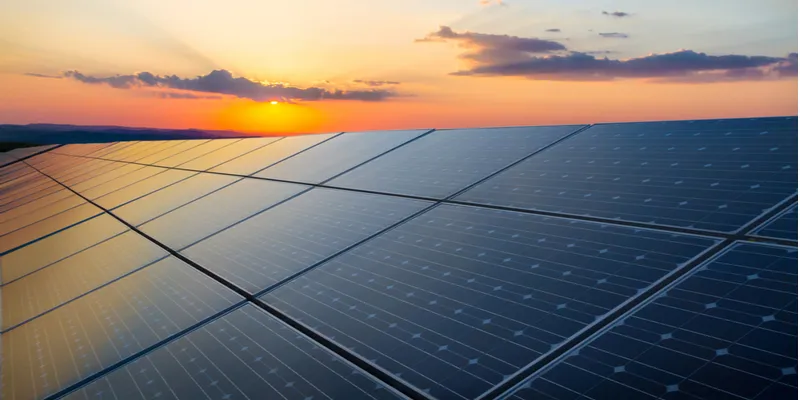How the Indian Railways plans to restore the railway ecosystem by 2030
Ahead of World Environment Day 2021, SocialStory shares some of the activities and projects undertaken by the Indian Railways, which is helping it get closer to its goal of becoming a ‘net zero carbon emitter.’
Every year, World Environment Day is celebrated on June 5 as a reminder to take conservation and the preservation of our environment seriously. This year, the theme is ‘Ecosystem Restoration.' With the earth’s depleting resources owing to reckless encroachment, it is more important now than ever to give back and replenish the earth. While some scars may be permanent, it is never too late to make a change.
The Indian Railways (IR), too, has been taking steps over the years to become more sustainable in its practices. In fact, it is on track to becoming the largest ‘Green Railways’ in the world.
By 2030, it hopes to become a ‘net-zero carbon emitter,’ and aid the environment through a variety of measures, including massive electrification and day-to-day water and paper conservation, to prevent animals from being injured on railway tracks.
Ahead of World Environment Day 2021, we share some of the Indian Railways’ activities and projects that are helping it get closer to this goal.

Representational image
Renewable energy
IR is becoming more eco-conscious and is putting a massive effort into its ‘green railways’ mission.
Since 2014, the pace of Railway electrification — an environment-friendly alternative that significantly reduces pollution — has increased nearly ten times. IR has planned to electrify balanced Broad Gauge (BG) routes by December 2023 to achieve 100 percent electrification of BG routes.
According to IR, as of May 1, 2021, 71 percent of the total Broad Gauge network has been electrified. An expenditure of approximate Rs. 21,000 crore is expected to be incurred for completion of the balance electrification.
Solar energy is now becoming a popular form of renewable energy that has already been implemented in several electric vehicles. IR is also joining this league and has installed about 114 MW of solar rooftop plants in over 1,000 stations and 400 service buildings. It also plans to take up a storage-based solar project. This pilot project will manage the peak demand and solar peak generation management.

Representational Image | Source: ShutterStock
In comparison to fluorescent and incandescent lights, LED lights are much more energy-efficient. Utilising that quality of LED, IR has been replacing all its common lighting with LED bulbs to scale this efficiency.
Over 8,000 railway stations have undergone 100 percent LED replacement, and at more than 20,000 railway installations and buildings during 2014-20. All residential quarters (about five lakh quarters) have also been converted to LED by May 2020.
High-speed rail is considered an eco-friendly means of transport, with its lower carbon dioxide emissions, compared to air or car travel. It produces only one-third of the carbon emissions of car travel and one-quarter the emissions of an equivalent trip by air per passenger.
The Government of India has sanctioned the Mumbai-Ahmedabad High-Speed Rail Corridor Project (508 km). In fact, about seven high-density passenger routes, covering about 5,000 km, have been identified for High-Speed Rail in the first phase for the preparation of the Detailed Project Report (DPR).
Less paper, more digitisation
Not only will ticketing become completely digital, but Travelling Ticket Examiners (TTEs) will now use handheld devices to save paper. 550 HHTs (Hand Held Terminals) have been provided onboard the Rajdhani, Shatabdi, and Gatimaan Express trains. Further, procurement of 10,000 more HHTs is under process.
Indian Railway Catering and Tourism Corporation (IRCTC) has also been advised to devise an application to provide information contained in Trains at a Glance in electronic form for dissemination along with time-table related information to the travelling public.
Water conservation

IR uses water for a variety of things — from cleaning the coaches to domestic usage within the trains. To bring in a sense of eco-consciousness, it has been implementing sustainable ways of water usage.
For example, it has introduced rainwater harvesting by creating an Eco Zone with water bodies around them for recharge. These water bodies are used to store rainwater. This, along with conservation and recycling of water, has made RWF self-sufficient in daily process water requirement of 2-3 lakh litres and saves an annual Rs 1.7 crore in water bills.
In addition, Rain Water Harvesting systems (RWHs) are provided at all establishments with rooftop areas of more than 200 square meters.
Clean, green railways
Another pressing problem that is commonly seen at the railway stations is the amount of plastic waste generated through plastic bottles, food packets, and single-use plastic cups and covers.
Dealing with this problem required a comprehensive policy on the installation of plastic bottle crushing machines (PBCM), which was introduced in 2019. These will be installed at prominent locations at stations on a self-sustaining business model. A total of 585 PBCM machines have already been installed at more than 400 railway stations, and more are in process.
From 2015, the provision of dustbin started in non-AC coaches under the Swachh Bharat mission. A new concept of compactor dustbins is introduced, wherein the garbage will be compressed to ensure that the dustbin can take waste multiple times its capacity. This is installed in LHB (Linke Hofmann Busch) Coaches to ensure cleanliness.
Protection of fauna
One of IR’s projects, Plan Bee, is an innovative method by the Indian Railways to prevent elephants from colliding with trains. An amplified sound of a Honey Bee is used to chase elephants away from train tracks.
This is very effective and helpful in diverting herds of elephants, especially when trains are approaching. Due to this initiative, the crashing of trains into elephants near the Level Crossing Gates has been reduced to zero.
Till May 2021, IR states that over 950 elephants have been saved all over Indian Railways’ tracks due to Plan Bee since the initiation of the programme in 2017.
Edited by Diya Koshy George








